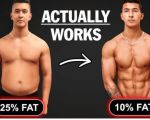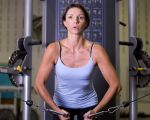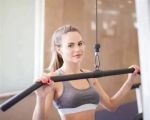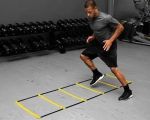Choosing the Right Gym Equipment: A Personal Journey to Fitness Success
Finding the right gym equipment can often feel like navigating a maze. As someone who has spent years bouncing between various gyms and trying out countless types of workout gear, I can confidently say that selecting the right equipment is just as important as your motivation. Whether you’re just starting your fitness journey or looking to level up your current routine, understanding what gym equipment works for you is key to achieving your goals. In this article, I’ll share my experiences, tips, and advice on how to select the right gym equipment to maximize your workout and ensure long-term results.
1. Understand Your Fitness Goals Before You Choose
Before even stepping foot into a gym or browsing through endless online stores for gym gear, it’s essential to pinpoint your fitness goals. Are you looking to build strength, increase endurance, or simply stay fit? Your fitness goals will largely dictate the type of equipment you’ll need.
For example, if you want to focus on building muscle, weight training equipment such as dumbbells, barbells, and kettlebells are great choices. If your goal is to increase cardiovascular health or lose weight, a treadmill, elliptical, or stationary bike would be better suited to your needs. Understanding your goals will save you time and money, ensuring you invest in equipment that works toward achieving the results you want.
2. Research the Different Types of Gym Equipment
Not all gym equipment is created equal. Some machines are designed for full-body workouts, while others target specific muscle groups. Let’s take a look at some of the most common types of gym equipment you may encounter:
- Cardio Machines: Treadmills, stationary bikes, rowing machines, and ellipticals fall into this category. These are great for improving heart health and burning calories.
- Weight Machines: These include resistance machines such as leg presses, chest presses, and cable machines. They’re great for beginners or those looking to target specific muscle groups.
- Free Weights: Dumbbells, kettlebells, and barbells are ideal for building strength. They require more technique and control, but they’re incredibly effective when used correctly.
- Functional Fitness Equipment: Items like resistance bands, medicine balls, and stability balls are designed to improve mobility and overall fitness.
Each type of equipment serves a different purpose, so knowing which ones align with your fitness goals is vital to making the right selection.
3. Consider the Space and Budget You Have
One of the biggest mistakes I’ve made in my fitness journey was buying equipment without considering how much space I had available at home. It’s easy to get excited and buy the latest gadgets, but when you get home, you realize your living room is now a makeshift gym.
To avoid this, measure the space where you plan to use your equipment and think practically. If you’re limited on space, look for compact equipment like resistance bands, dumbbells, or foldable machines that can be stored away when not in use.
Next, consider your budget. Fitness equipment can range from affordable to high-end, so make sure you pick gear that fits both your needs and your finances. Sometimes, less expensive equipment can be just as effective as pricier options. For example, a jump rope or a set of dumbbells can give you a great full-body workout without breaking the bank.
4. Quality Over Quantity: Don’t Compromise on Durability
As tempting as it may be to buy cheap, mass-produced equipment, I’ve learned that quality should never be compromised when it comes to gym gear. Poorly made equipment not only wears out quickly, but it can also lead to injuries. I remember purchasing a cheap bench press that wobbled with every rep. It wasn’t long before I realized the importance of durability.
Look for gym equipment that is well-reviewed, comes from reputable brands, and is designed to withstand heavy use. High-quality equipment may be more expensive upfront, but it will last much longer and provide you with a safer, more effective workout experience in the long run.
5. Try Before You Buy: Test Equipment at the Gym
If you’re unsure about which equipment to invest in, I highly recommend testing it out first. Most gyms offer a variety of machines, so take the time to experiment with different pieces of equipment to see what feels comfortable and aligns with your fitness goals.
For example, when I first started weightlifting, I wasn’t sure whether I should use machines or free weights. After trying both, I realized that free weights offered me more flexibility and allowed me to perform a wider range of exercises. Testing equipment before you commit can help you avoid purchasing something that doesn’t work for you.
6. Listen to Your Body and Avoid Overtraining
One of the biggest mistakes I made early on was pushing myself too hard with the new gym equipment I purchased. I quickly realized that overtraining not only slows progress but also increases the risk of injury. It’s crucial to listen to your body and avoid overloading yourself, especially when using new equipment.
Start slow and gradually increase intensity, giving your body time to adapt. Also, don’t hesitate to ask a trainer or fitness expert for guidance on proper form and technique. This will ensure that you’re using the equipment safely and effectively, reducing the risk of injury and maximizing results.
7. Invest in Versatile Equipment for a Full-Body Workout
While it’s important to select equipment based on your goals, it’s also a good idea to invest in pieces that offer versatility. For instance, a pair of dumbbells can be used for a wide variety of exercises targeting different muscle groups. Similarly, resistance bands are lightweight, portable, and perfect for working the entire body.
Investing in versatile equipment means you can switch up your routine and keep your workouts interesting. It also gives you the flexibility to adapt your workouts as your goals evolve.
When I started my fitness journey, I bought a few essential pieces of equipment, like a yoga mat, resistance bands, and dumbbells. These simple tools were all I needed to build a solid foundation for my fitness routine. As my goals progressed, I added more equipment to complement my growing needs.
8. Keep Up with Maintenance and Care
Once you’ve selected your gym equipment, maintaining it properly is crucial to ensure its longevity. Clean your equipment regularly and check for any signs of wear and tear. A little maintenance goes a long way in keeping your gear in top condition and ensuring that you’re working out safely.
Personally, I’ve made it a habit to clean my machines and weights after every use. It takes just a few minutes, but it keeps everything looking and functioning as it should, allowing me to continue working toward my fitness goals without interruptions.
9. Stay Motivated with New Equipment
Sometimes, all it takes is a fresh piece of equipment to reignite your passion for fitness. I’ve found that new gear can bring a sense of excitement and motivation to my workouts. Whether it’s a new set of dumbbells or a piece of high-tech cardio equipment, having something new to try can make your workouts feel fresh again.
However, it’s important to remember that equipment is just one part of the equation. Motivation, consistency, and a well-structured plan are what will truly propel you toward your fitness goals. But every now and then, splurging on a new piece of equipment can be just what you need to stay on track.
In the end, selecting the right gym equipment is a personal decision that depends on your goals, space, budget, and fitness level. By taking the time to understand what works best for you, you can make informed choices that will keep you motivated and help you achieve the results you desire. So, next time you’re in the market for new gym gear, remember these tips, and you’ll be well on your way to a successful fitness journey.








